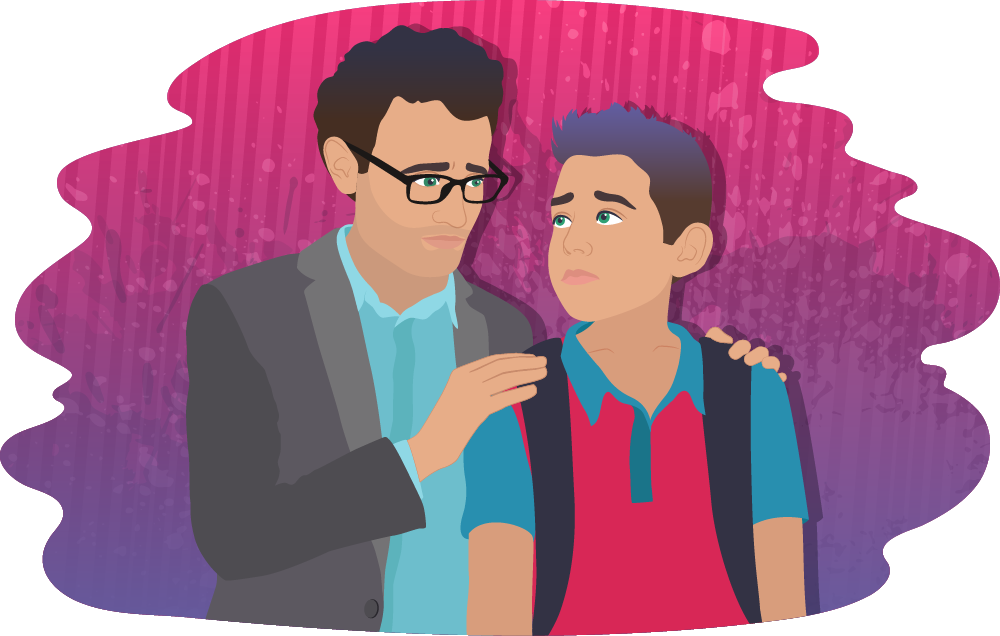Anxiety in kids and teens
Parenting a child with anxiety is tough, but you don't have to ...
READ MECheck out our guide to supporting your child to go back to ‘normal’ after COVID-19 (novel coronavirus).

Everybody has different feelings about going back to ‘normal.'
Parentline QLD & NT asked parents if they were ready to return to normal. Half of parents were, and half weren’t.
We also asked young people on Instagram whether they were ready to go back to ‘normal’. 39% of young people told us they weren’t ready.
Here are some direct quotes from young people about why they feared getting back to the way things were.
It’s normal to be both excited to get back to normal and to feel stressed or anxious about it. If you need support, get in touch with the Parentline service in your state or territory.
There are many reasons why going back to normal might be anxiety-provoking for your child. Here are some of the main concerns young people had:
Grief/loss over changes in lifestyle
'Normal’ won’t be the same as before COVID-19
Return to pre-COVID-19 stresses, like school bullying
Life was better in isolation, e.g. more time with family
Feeling safe at home and unsafe/out-of-control in public
Fear of COVID-19 second-wave
Supporting a worried child
It’s very normal for children and young people to experience re-entry anxiety following a pandemic. Here are some things that can help:
“It’s ok to not have all the answers. If your child asks a question you can’t answer, or needs help with something you don’t know how to solve, be honest. It’s a great opportunity to do some research and learn something new together.”
– Amanda, Kids Helpline Counsellor
What’s the difference between normal behaviour and concerning behaviour?
Some changes in behaviours are normal. Here’s how to know when to get help:
Normal impacts
Research into psychological impacts of health anxiety, quarantine and isolation have found a range of short-term emotional changes are normal, including confusion, anger, anxiety and depression.
Some short-term behaviour change is also normal. This includes insomnia, exhaustion, irritability, or avoidance, e.g. avoiding crowded places.
Some long-term behaviour changes can also be normal, e.g. changes in hygiene practices.
Concerning impacts
While most children will bounce back and recover in their own time, a pandemic can trigger Acute Stress Disorder (ASD) or Post-Traumatic Stress Disorder (PTSD) symptoms in some people.
Trauma is a response to a deeply distressing or disturbing event that overwhelms your ability cope. A trauma typically involves intense feelings of fear, helplessness or horror. A trauma can include the threat of serious harm, or death to themselves, or another person, e.g. fear for an immune-compromised sibling or witnessing the suffering of others on the news.
If you are concerned that your child is more distressed than expected, is taking longer to recover or is struggling to cope, it’s important to seek professional support. ASD & PTSD are very treatable.
Helping your child transition back to school
Being away from school and returning to an environment that has changed can be anxiety-provoking. Here are some ways you can support your child:
Some resources that may help your child:
Need help supporting your child to return to normal?
There’s help available for parents if you’re looking for information and guidance. Try calling Parentline in your State or Territory for assistance.
Anxiety in kids and teens
Parenting a child with anxiety is tough, but you don't have to ...
READ MEDepression in kids and teens
You might be unsure whether your child is just sad or if ...
READ MESocial anxiety in kids and teens
Parenting a child with social anxiety can be a challenge, but you're ...
READ MESupporting a child who is thinking of suicide
As a parent, it’s frightening to hear your child talk about ...
READ METalking helps! We’re here for your kids.
No problem is too big or too small.
We're here 24 hours a day, 7 days a week